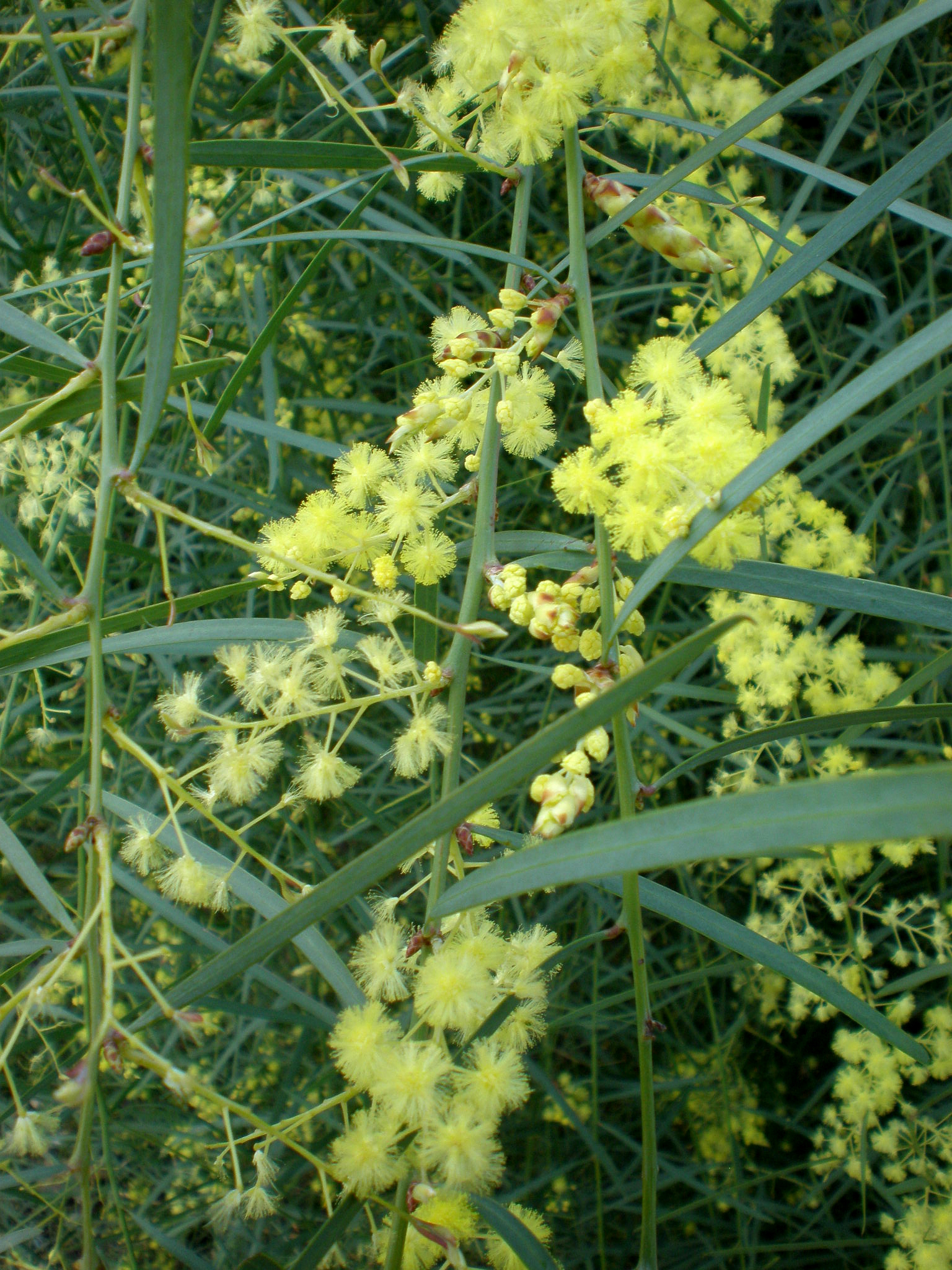Acacia Iteaphylla on:
[Wikipedia]
[Google]
[Amazon]
 ''Acacia iteaphylla'', commonly known as Flinders Range wattle, Port Lincoln wattle, winter wattle and willow-leaved wattle, is a shrub belonging to the genus ''
''Acacia iteaphylla'', commonly known as Flinders Range wattle, Port Lincoln wattle, winter wattle and willow-leaved wattle, is a shrub belonging to the genus ''
Acacia
''Acacia'', commonly known as the wattles or acacias, is a large genus of shrubs and trees in the subfamily Mimosoideae of the pea family Fabaceae. Initially, it comprised a group of plant species native to Africa and Australasia. The genus na ...
'' and the subgenus ''Phyllodineae'' that is endemic to South Australia.
Description
The shrub has a weeping habit and typically grows to a height of with a crown width of . Young plants are glabrous and have greenish coloured bark that later becomes brown in colour as the plant ages. The slender grey-green foliage has pink-red tips of new growth. The long slenderphyllode
Phyllodes are modified petioles or leaf stems, which are leaf-like in appearance and function. In some plants, these become flattened and widened, while the leaf itself becomes reduced or vanishes altogether. Thus the phyllode comes to serve the ...
s are arranged alternately and have a prominent single vein running lengthwise and grow up to in length. It produces yellow flowers from March to September. The flowers are arranged into small spherical clusters that are found in short compound clusters in the phyllode forks. The flower heads have a diameter of and contain 12 to 17 pale to lemon yellow flowers. The thin leathery light brown seed pods that form following flowering are elongated and flat usually in length and wide. The pods contains hard black ellipsoidal shape seeds that are in length and half as wide.
Taxonomy
The species was first formally named by the botanist George Bentham in 1855 as part of the work ''Plantae Muellerianae: Mimoseae. Linnaea: ein Journal für die Botanik in ihrem ganzen Umfange, oder Beiträge zur Pflanzenkunde''. It was reclassified as ''Racosperma iteaphyllum'' by Leslie Pedley in 2003 but transferred back to the genus ''Acacia'' in 2006. The only other known synonym is ''Acacia iteaphylla'' var. ''iteaphylla'' as described byFerdinand von Mueller
Baron Sir Ferdinand Jacob Heinrich von Mueller, (german: Müller; 30 June 1825 – 10 October 1896) was a German-Australian physician, geographer, and most notably, a botanist. He was appointed government botanist for the then colony of Vict ...
in 1859.
The species name is taken from the Greek words ''itea'' meaning ''willow'' and ''phyllon'' meaning leaf referring to the narrow, willow-like leaves of the plant.
Distribution
It is native to theFlinders Range
The Flinders Ranges are the largest mountain range in South Australia, which starts about north of Adelaide. The ranges stretch for over from Port Pirie to Lake Callabonna.
The Adnyamathanha people are the Aboriginal group who have inhabited ...
, Gawler Range and Eyre Peninsula of South Australia. In these areas it is found among rocky outcrops on hillsides or along rocky creek beds. The shrub is now also found in parts of New South Wales and western Victoria where it is an invasive species. It also is invasive in Western Australia where it is also an invasive species that has become naturalised. It has a sporadic distribution in an area through the South West, Wheatbelt and Great Southern regions where it is found among jarrah forest in sandy soils.
Cultivation
The shrub is sold commercially for cultivation in seedling in seed form. It can take full sun or partial shade, can grow insaline
Saline may refer to:
* Saline (medicine), a liquid with salt content to match the human body
* Saline water, non-medicinal salt water
* Saline, a historical term (especially US) for a salt works or saltern
Places
* Saline, Calvados, a commune in ...
soils and is frost
Frost is a thin layer of ice on a solid surface, which forms from water vapor in an above-freezing atmosphere coming in contact with a solid surface whose temperature is below freezing, and resulting in a phase change from water vapor (a gas) ...
tolerant and drought tolerant once established. Used in gardens as an ornamental screen or as a low windbreak, as it is fast growing and has attractive foliage. The best known cultivar of ''A. iteaphylla'' is a low-growing form called Acacia "Parsons Cascade". Seeds need to be scarified or treated with boiling water prior to planting.
See also
* List of ''Acacia'' speciesReferences
{{Taxonbar, from=Q15287407 iteaphylla Flora of South Australia Acacias of Western Australia Plants described in 1855 Taxa named by George Bentham